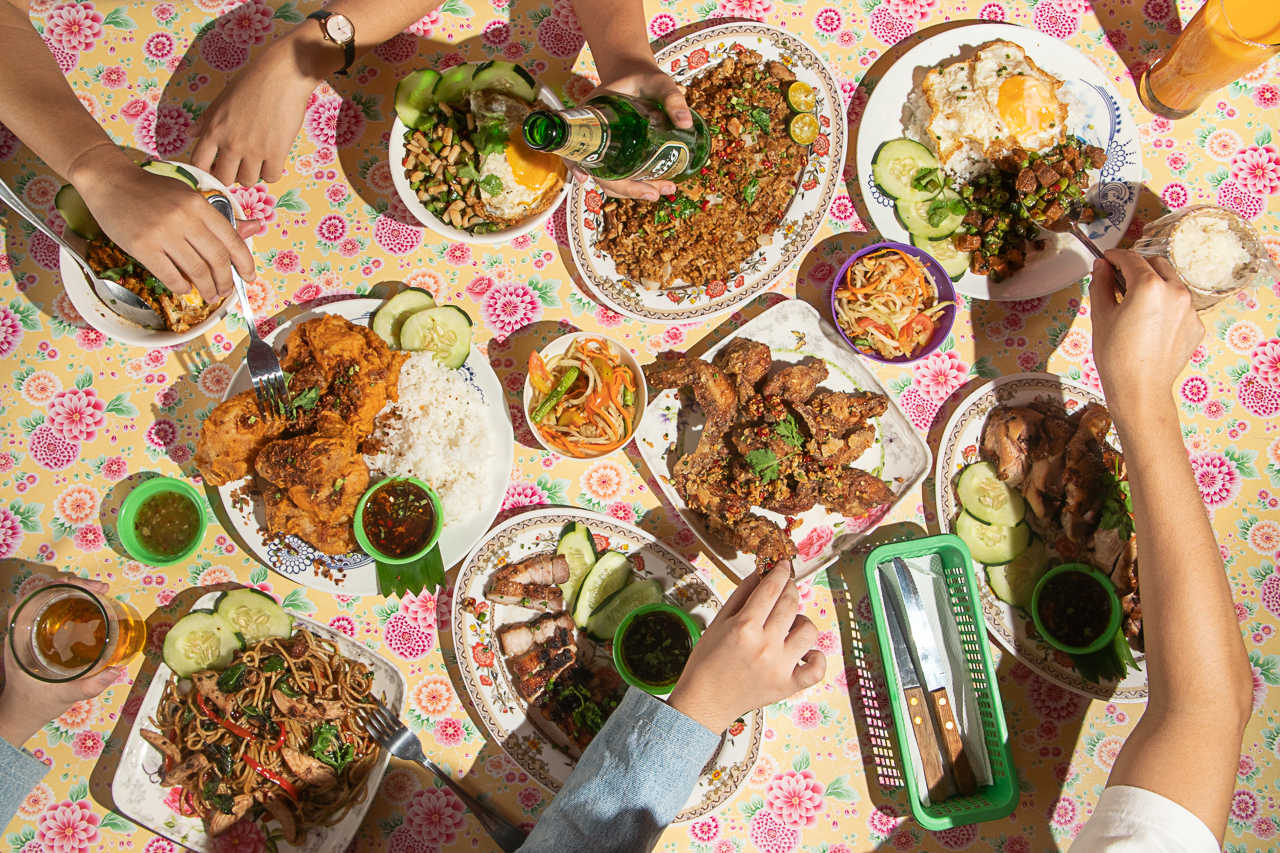On Ebro Street in Poblacion, where a bar serving Mediterranean street food used to be, there now stands a Thai restaurant that has—as one of its centerpieces—a chicken dish called gai yang. This would be an unremarkable fact were the place in question set in Thailand where gai yang (literally “grilled chicken”) is considered a classic and could be found at just about any food establishment. But because this is in Manila, the grilled chicken deserves special mention.

As do the restaurant’s interiors: At Khao Khai Thai Chicken House, the bright pink walls are adorned with old Thai movie posters, Buddhist shrines, and photographs of the king, providing the backdrop to plastic chairs and floral tablecloths atop wooden tables. There’s music constantly humming in the background. It’s not easy to tell who’s singing, but for posterity, think of it as the sonic equivalent of the restaurant’s interiors. This is all deliberate, of course. The loud decor and the absence of the usual Thai dishes are owner Daniel Mabanta’s ideas of a unique Thai dining experience, one that the local dining scene probably needs more of.
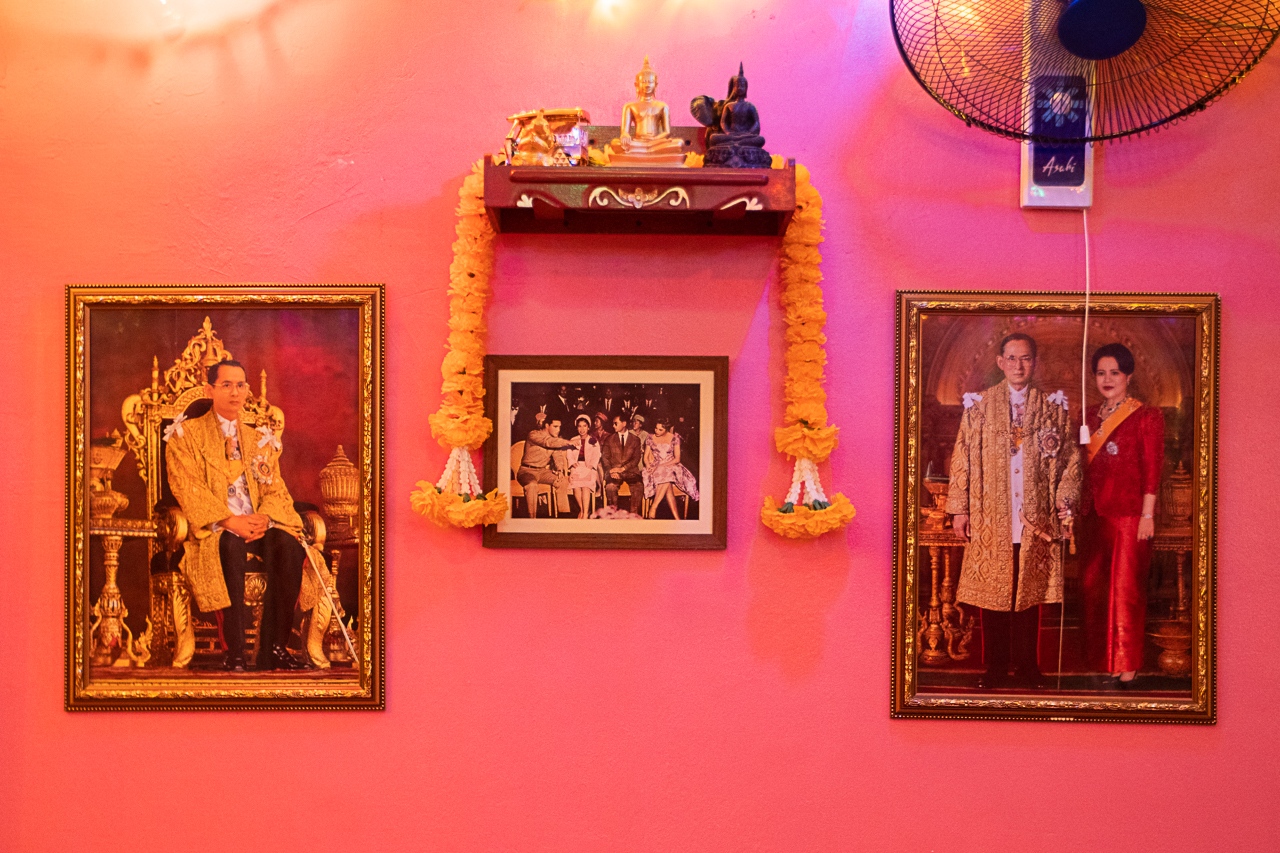
“Thailand has one of the best street food scenes in the world, and I feel like it’s a bit underrepresented abroad. People just go for the usual, touristy dishes like pad thai, crispy catfish salad, or tom yum. So I wanted to introduce another facet of Thai cuisine—one of many, because it’s [Thai cuisine] such a complex one,” says Mabanta.
This “kitsch”-as-authentic branding approach was a necessary strategy, and it’s one that’s bound to work in Poblacion where a kind of knowing, non-caustic irony can almost always find an audience. Ultimately, though, retaining that audience can only really be guaranteed by food. And though Mabanta’s latest concept hasn’t been operating long enough for it to be objectively assessed for its potential, it’s still worth looking into what a place like Khao Khai Thai Chicken House is doing in a market obsessed with trends and where words like ‘authentic’ has been used so much it’s come to lose its meaning.
A familiar (and new) chicken experience
The New York Times food critic Ligaya Mishan wrote about gai yang: “The dish’s very status as a classic was part of the trouble. How can one make it comfortingly familiar but not mundane, thrilling without losing its simplicity?” Presumably, this isn’t a problem Mabanta needed to worry about. Grilled chicken doesn’t hold quite the same classic status here in Manila, which frees it from the same expectations or ideas Filipinos have about staples like adobo or sinigang. It doesn’t exactly have to be thrilling or be subjected to twists for it to sell. But in the same way that it can thrive in mundanity, its lack of an iconic status lends it some flexibility: Variations on the recipe are more likely to be met with curiosity rather than start debates about authenticity.
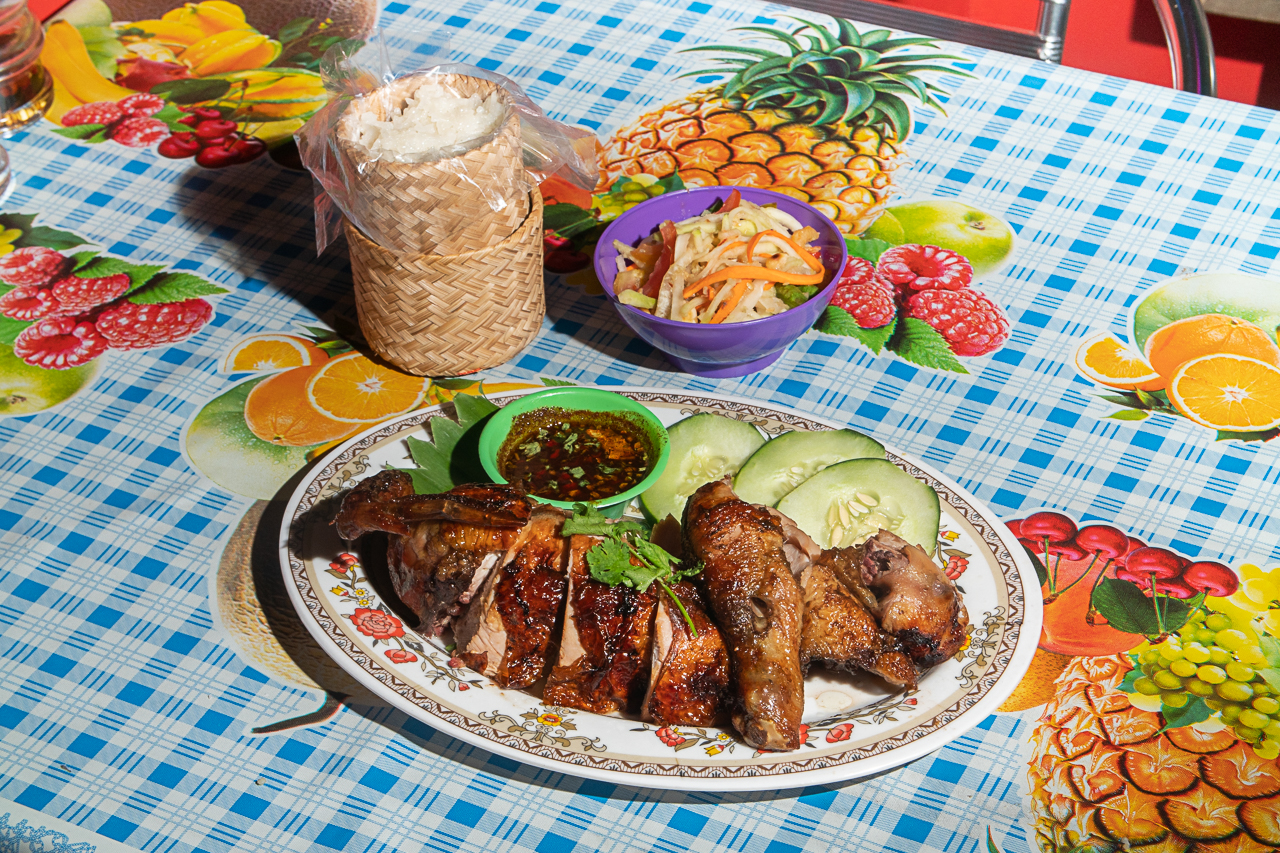
At Khao Khai Thai Chicken House, people are encouraged to eat grilled chicken with som tam (hand-cut papaya salad) and sticky rice. “Traditionally, in Thailand, what they would do is dip the sticky rice in the som tam juice and eat that with the chicken. It’s a whole experience. Very typical Chiang Mai experience,” says Mabanta. It’s both a familiar and new offering; it might be a distinct one, too, given that it’s one that’s being offered in a dining scene that’s long had a generally myopic view of Thai food.
Khao Khai Thai Chicken House isn’t explicitly marketed as a purveyor of a counterculture—and if it were, Mabanta would insist just the same that at the end of the day, it’s really about how the food tastes. But the restaurant’s focus on serving “everyday, working class Thai food” is nevertheless an interesting response to the industry’s obsession with trends.
Veering away from that view led to a menu that follows a more regional approach, with many of the dishes coming from the Isan region, a place considered by Thai food enthusiasts as the country’s culinary capital because of its complex and intensely flavored food. The turmeric-and-kaffir-lime-heavy flavors of southern Thai dishes such as moo hong (braised pork belly) also feature heavily at Khao Khai Thai Chicken House, providing another dimension of variety and intensity to a menu that’s a product of immersive research and a desire to expand and present ideas about a cuisine that deserves it.
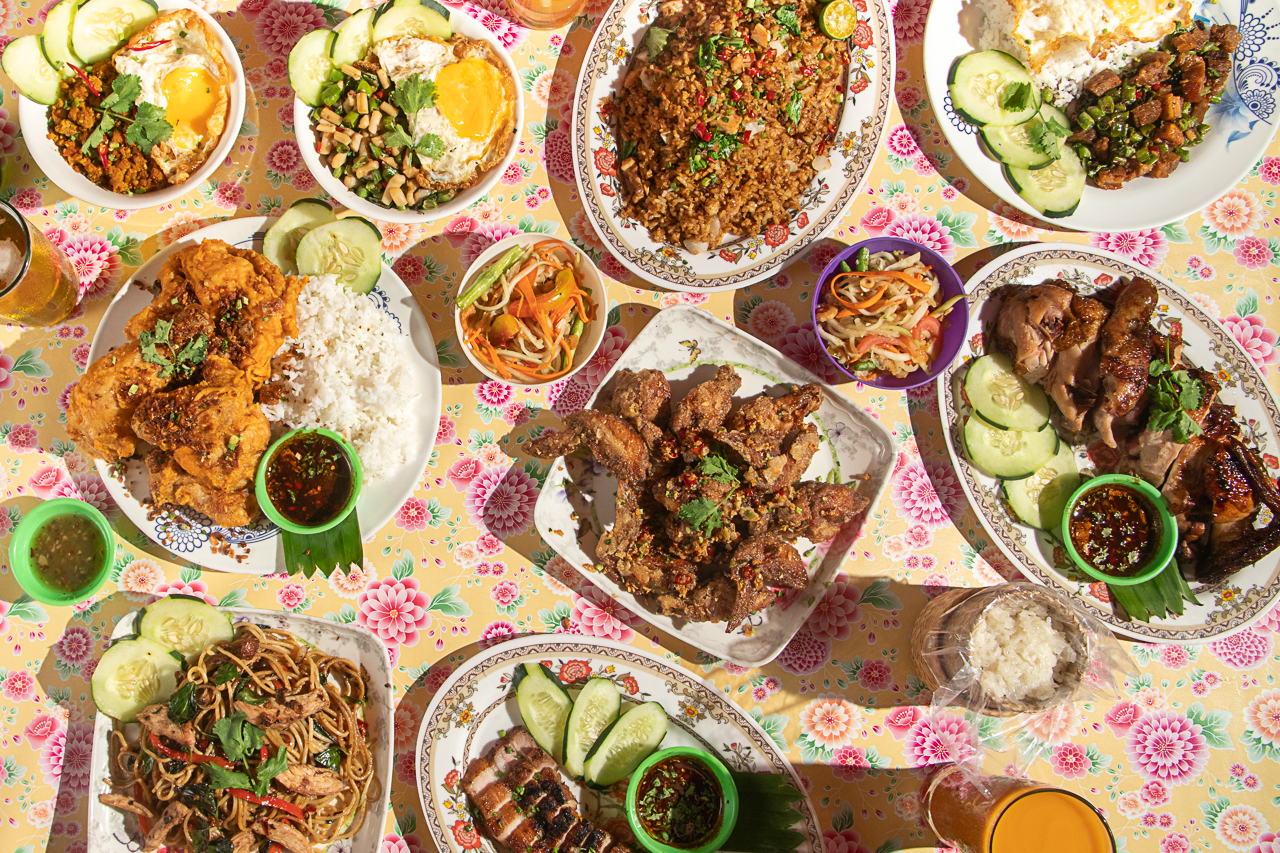
It also happened that one way to approach the latter goal was to tap into existing resources. “I also own Señor Pollo, so I thought why not focus on Thai chicken dishes and make them one of our selling points? So besides gai yang, we also have gai tod, which is fried chicken. When you go to Bangkok you’ll see street vendors frying chicken in these carts. We’re trying to go with that flavor.”

It’s in this sense that it was much more convenient for Mabanta to position his concept as a worthy alternative to many Thai restaurants in the metro, using something he’s had years of experience with to hopefully fill a gap in the scene and make another foray into the well-served market of chicken-centric concepts.
Khao Khai Thai Chicken House isn’t explicitly marketed as a purveyor of a counterculture—and if it were, Mabanta would insist just the same that at the end of the day, it’s really about how the food tastes. But the restaurant’s focus on serving “everyday, working class Thai food” is nevertheless an interesting response to the industry’s obsession with trends.
It’s a lot to load onto a restaurant as young as Khao Khai Thai Chicken House, but if all else fails, at the very least there’s still something to be said about its efforts to spotlight a different facet of Thai cuisine and, in the process, test out the idea that there may be far more effective ways to stand out than riding on trends.
Business as a creative pursuit
A new restaurant opens in a busy district, supposedly on a mission to, among many things, make some kind of impact and cut through the noise of the innumerable establishments that are trying to do the same. In many ways, this is the worn-out story that fuels the industry. As we’ve reported before, an average of 2,500 food establishments have opened every year since 2014.

Mabanta’s Señor Pollo was one of these restaurants, opening shop in 2014 in Tomas Morato. A couple years later and the Latin chicken hole-in-the-wall now has seven branches, one of which sits right across Khao Khai Thai Chicken House. The former has seen the early days of Poblacion when it hasn’t yet become the frenzied (and gentrified) nightspot it is now. Things were different then. People who wanted to set up a business in the area could take advantage of the low residential rent and the relative lack of competition. Khao Khai Thai Chicken House, meanwhile, is part of a new fleet of establishments trying to fit into the district’s food and beverage milieu.
Asking Mabanta, who’s seen these two phases up close, if he was at all concerned about the saturation of establishments in the area and how he plans to manage competition and the increasingly specialized demands of diners with his new restaurant: “Not really, since it’s mostly bars here [in Poblacion]. People need to eat, and they need places that are a bit more democratic. I feel a lot of places here are getting more expensive. Some are getting a bit pretentious. So we want to take it back to the streets. People can just walk in here, not spend much money, and just have a good time.”

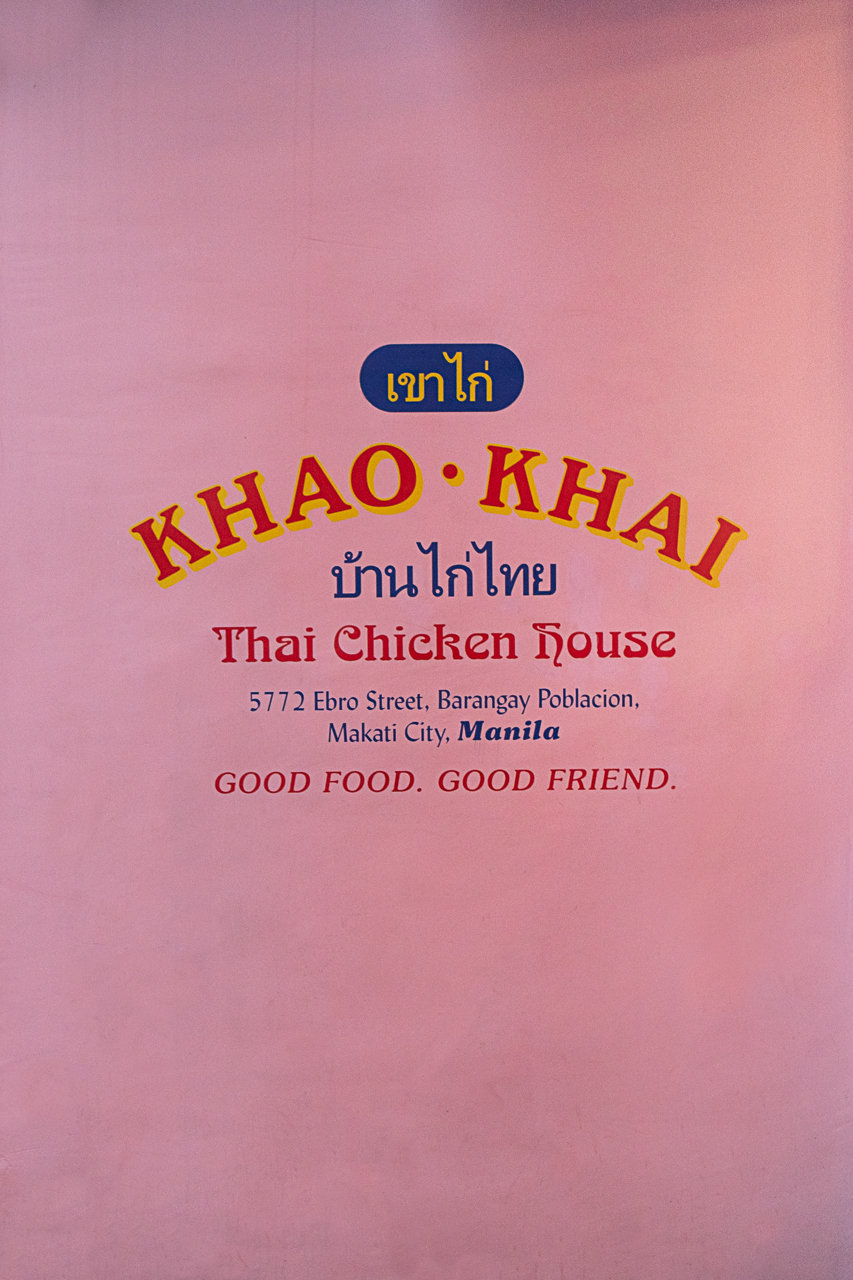
This isn’t an oversimplification of an otherwise tough, practical, and convoluted business—restaurant closure happens at a dizzying pace. But sometimes it helps to recognize that business acumen can take on the form of having a knack or a feel for certain things; an attunement to the arts and being able to recognize direct associations between seemingly disparate fields.
“I find this business to be an art in itself. It’s a creative pursuit. Being an entrepreneur, you have to be creative in ways that you market yourself and your products. For me it’s important to have a sensitivity to people’s tastes, to people in general. As someone who runs a business you have to understand what people like, what they respond to. You have to be observant.”





